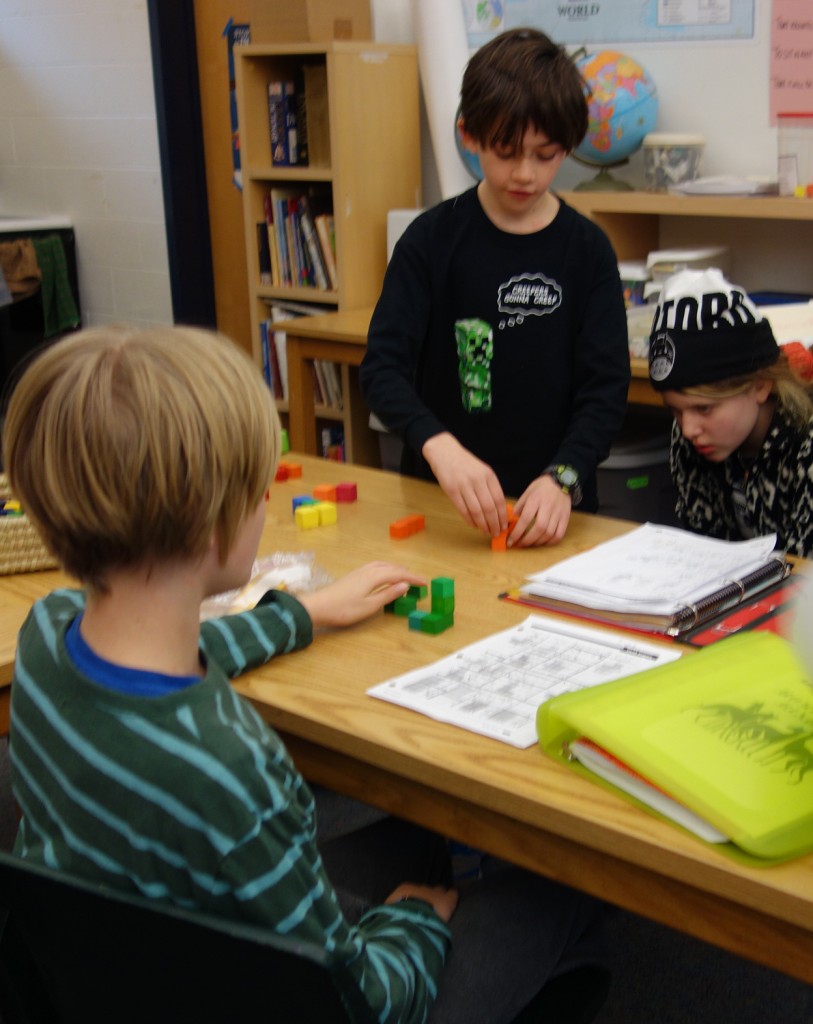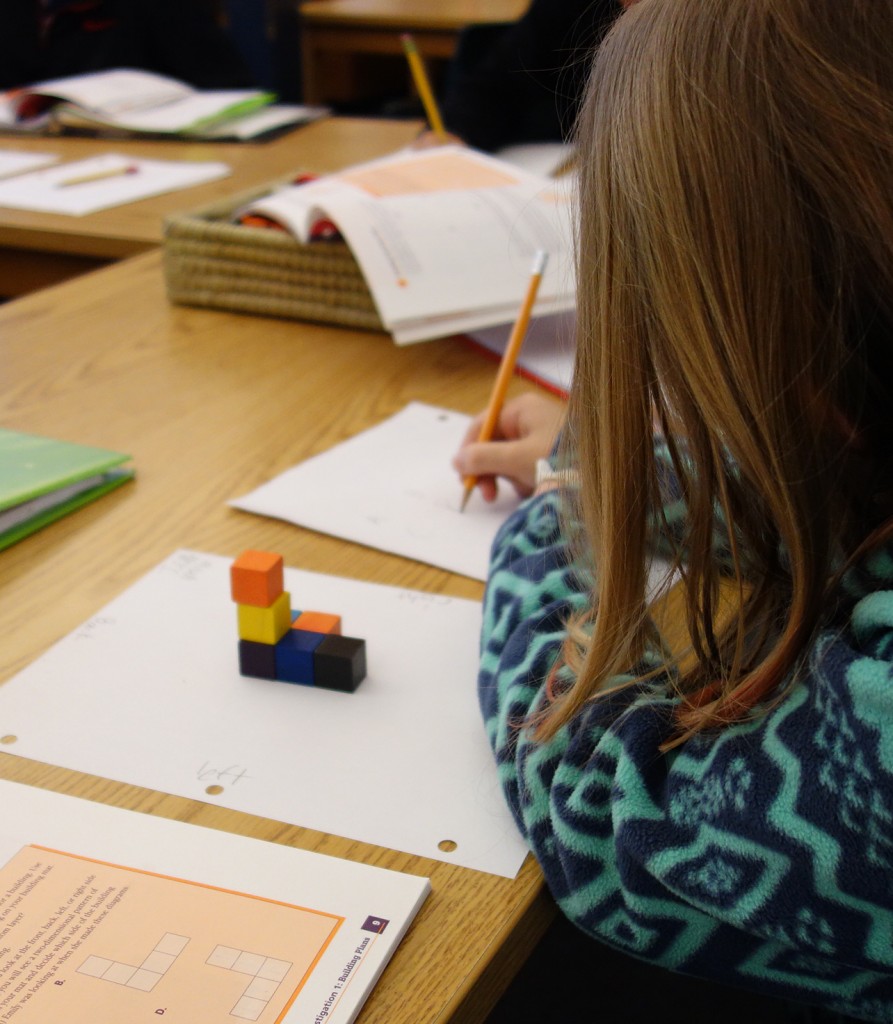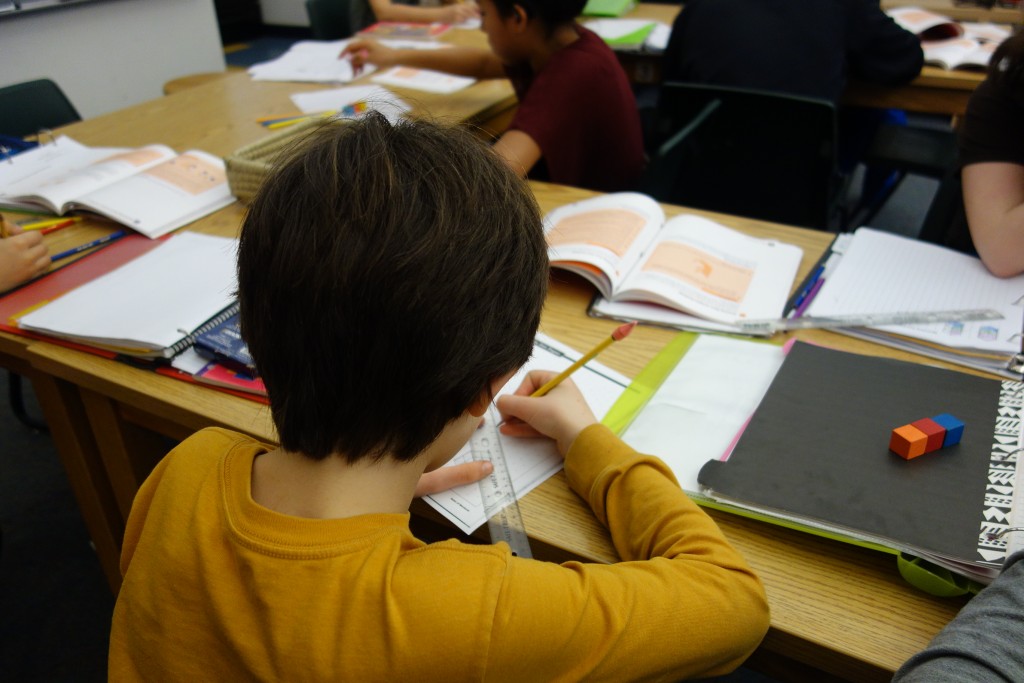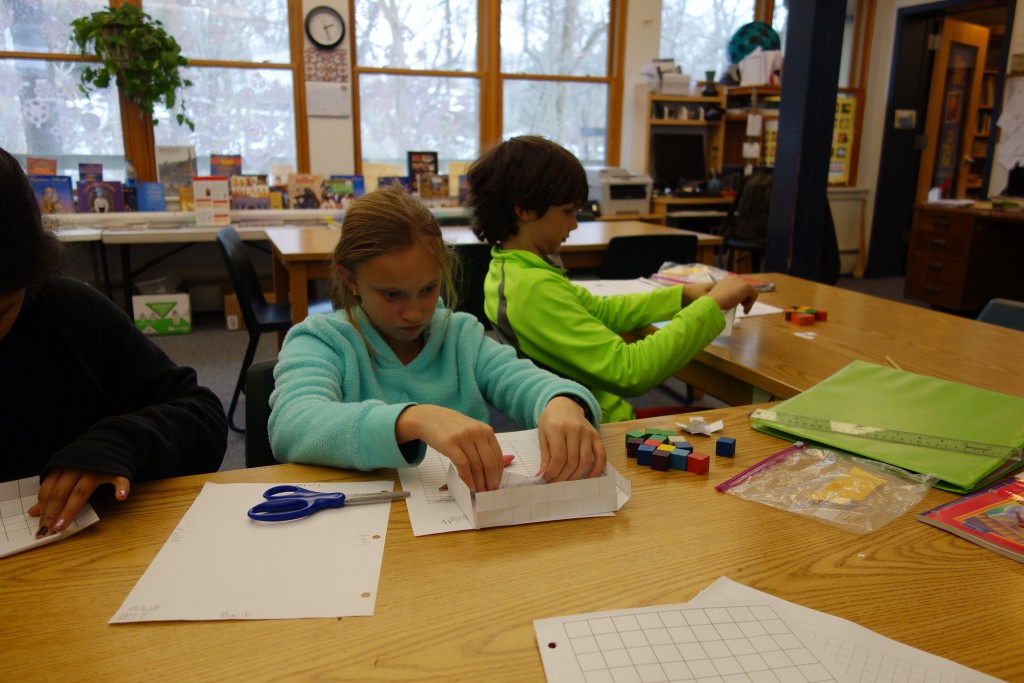The last two weeks (Jan 18 and 25) were shortened by a major blizzard and a national holiday. They were further altered by the sudden death of the mother of one of our recent graduates and the community’s response in support of the family. All four teachers in our building attended the funeral service, as did a number of students. We had thoughtful discussions in our classroom and in some of the specialists’ classes about loss, rituals, and ways we might respond to such an event.
When students returned to school on Wednesday after two days of closing due to deep snow, they were delighted by the opportunity to go snow-tubing on the hill adjacent to the science room. Unfortunately, the hill quickly became too icy and fast for safe play, and the tubes had to be set aside until (and if) we get another, gentler snowfall. Some of our group decided to use their choice time indoors and began playing with our box of Keva planks. Follow that link to the manufacturer’s site to see what can be done, especially if you have thousands of them. We have just 400, but they still offer a lot of open-ended play. One of the more popular activities was building a very tall tower and then (of course) knocking it down. The one in this photo was later revised to start from the floor, so the collapse was even more noisy and dramatic.
Our math classes lately have centered around visual/spatial activities. As they found when we did similar activities as a prelude to our toothpick bridge project back in September, it sometimes requires getting a table-level view.
As the week ended, we had just begun working with isometric dot paper. This makes it relatively easy for students to draw structures made from cubes in a way that looks three-dimensional. They were having so much fun with it (after some initial frustration with figuring out how it works) that many decided to take their books and papers home to continue working on — or, better, playing with — it during the weekend!One of the things that students discover as they do math that is visual rather than number-based is that we all have different strengths and areas of challenge. Students who master computation algorithms easily are not necessarily quick or accurate with geometry, and students who have struggled with algebraic reasoning are sometimes the first to figure out how to arrange 8 blocks to get the greatest and least possible surface area or how to use a compass and straightedge to replicate a complex design.
Our final exploration in this unit was to make paper patterns for open-top boxes. Students calculated and compared the surfaces areas and volumes. If you start with a 20 by 20 sheet of graph paper and start cutting out square corners to make a box, what is the greatest number of blocks it can be cut to hold? Interestingly, we discovered that Rachel and Rich’s second and third graders were doing a similar project!







